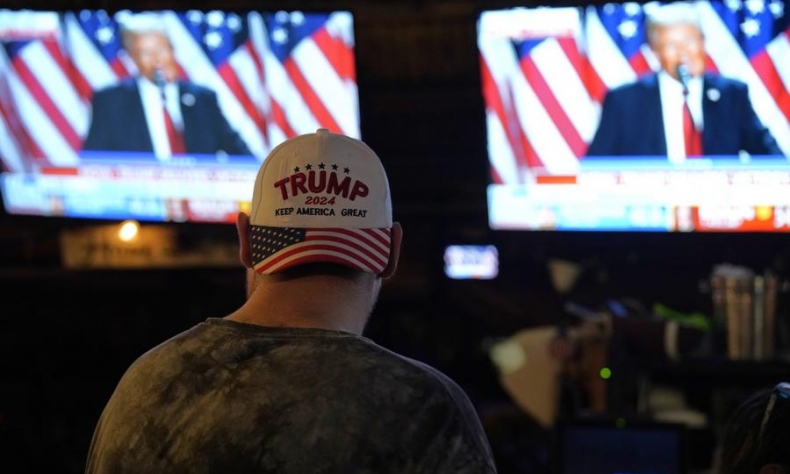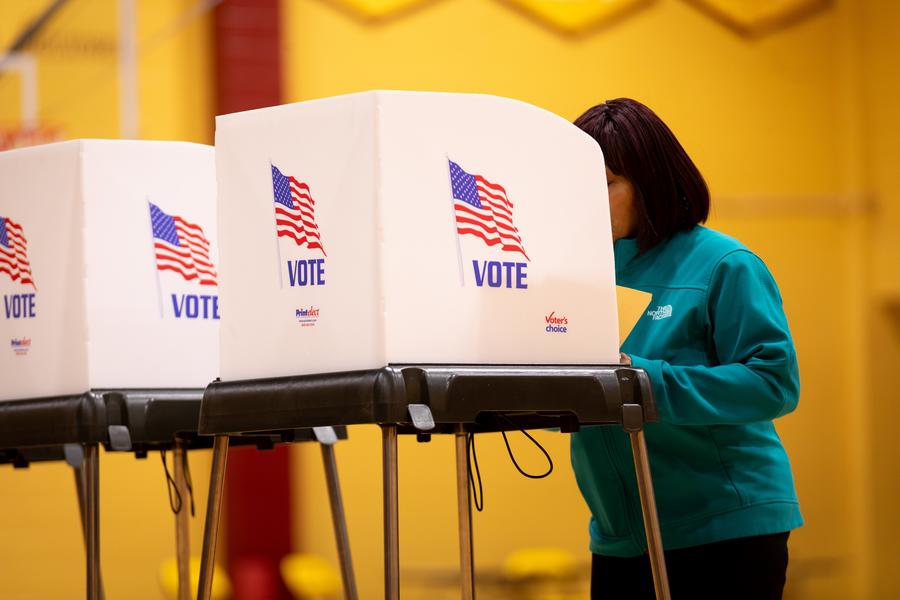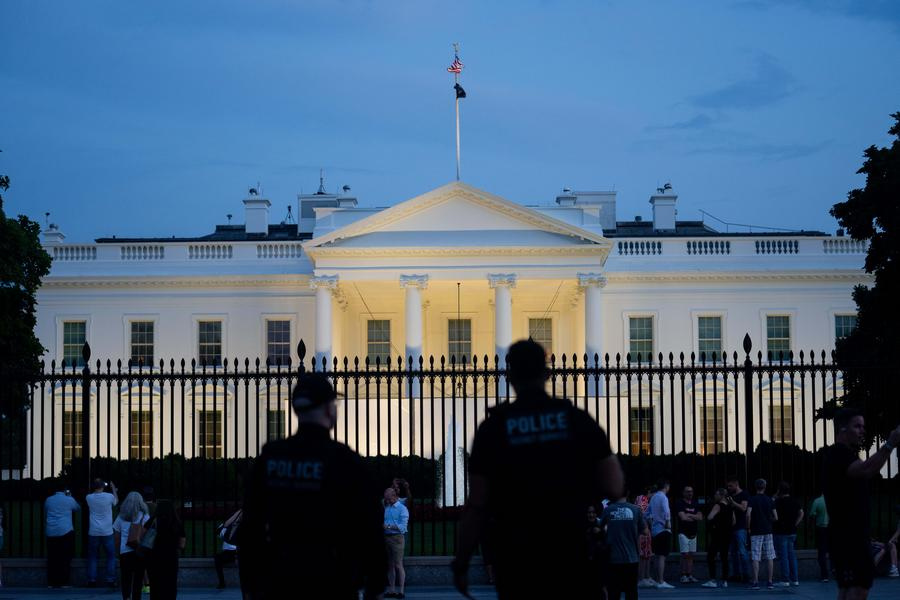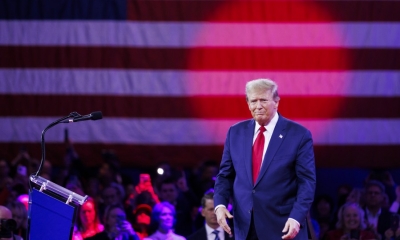The Trump Victory and Its Implications for the World

Trump in his second presidential term should undertake a realistic and constructive foreign policy that will promote peace and development and begin to repair the damage done to U.S. prestige and national interests over the past several decades.
Former United States president Donald Trump made a spectacular and historic political comeback that will significantly impact American domestic and foreign policy. As president again, however, can Trump change America’s reckless and counterproductive course abroad and rescue it from decay and lack of unity at home?
The belligerent and bellicose U.S. administrations of the last two decades resulted in a bifurcated international system, wars, and Washington’s increasing isolation in a changing world. Militarism replaced diplomacy and the result has been unnecessary wars in Iraq, Afghanistan, and Ukraine. The world also has witnessed the savage U.S.-Israeli aggression in occupied Palestine which threatens to lead to regional wars.
Not content with destabilizing Europe and Eurasia with wars and covert operations, Washington increased tensions in the Asia-Pacific. The Pacific is not “pacific” because the United States undertook an aggressive and provocative “pivot” to the region begun by the Barack Obama administration and continued to the present day.
What happened?
Trump’s victory not only placed him over the 270 Electoral College votes needed but also placed him ahead of Harris in the national popular vote.
The U.S. “Founding Fathers” established a federal and constitutional republic composed of separate states joining together under a federal government. In the House of Representatives members are apportioned according to the population of each state. In the Senate each state has two senators so as to give equality to the states thereby preventing more populous states from dominating less populous states.
The Electoral College was designed to give representation to states according to their population. This system was adopted from the historic system of the Holy Roman Empire in which the emperor was elected by what were called “Electors” from various principalities and entities within its realm.
Interestingly, the overall popular vote on a national basis was won by Trump with over 50 percent of the national vote. This then strengthens his mandate because it does happen that presidents are elected by the Electoral College procedure but to not have the overall national vote. Trump has both so his mandate is unquestionable.
Trump changed the two-party political situation in the United States in that he forged a new coalition for the Republican Party. Historically, there have been sectional differences and racial differences that impact presidential elections. The Republican Party under Abraham Lincoln freed the slaves with his Emancipation Proclamation which was sealed by the decisive military victory of the Union forces against the separatist Confederate forces in the Civil War. Thus, the southern black vote came to support the Republican Party while the Democratic party had been the party of slavery.
President Franklin Roosevelt changed the two-party political situation when he formed a coalition for the Democratic Party that included the working class plus black Americans and Jews as ethnic blocs. This Democratic Party coalition remained ever since but Republican presidents have cut into it. For example, President Ronald Reagan attracted large numbers of working class “blue collar” voters who switched over to him from the Democratic Party.

Like Reagan, President Donald Trump in his 2016 victory also attracted working class voters and a small percentage of black voters which helped put him over the top. In 2024, Trump again attracted substantial working-class voters to include unionized workers, a small percentage of black voters, and a large percentage of Hispanic voters. Additionally, Arab-American voters gave Trump important support in the swing state of Michigan, for example. Younger voters were also attracted to Trump more than had been thought.
Strikingly, Trump attracted Robert F. Kennedy Jr. to his side after the Democratic Party rejected him. Given the Kennedy legacy of his martyred uncle, John F. Kennedy, and his own father, Robert F. Kennedy, this move is a truly historic development in party realignment. It amplifies the Republican Party voter base and positively impacts of Republican Party policy in a progressive direction.
Because the major legacy media and public opinion polling organizations in the United States are aligned with the Democratic Party the impression was given falsely that Trump and Harris were running neck and neck and that Harris would win. Internal polling data available to the Republican Party, however, showed a different story giving Trump and his team confidence and boldness in the campaign.
Overall, Trump shaped a historic political realignment in the United States in terms of voter base and party policy. Additionally, this realignment bodes well for regaining national cohesion.
What direction for Trump foreign policy?
Can Trump put the U.S. state ship on a constructive foreign policy course? The answer depends upon how he staffs his administration not just on his rhetoric. Will he appoint officials who will faithfully implement the policy that he has put forward during the campaign and the policy that he claims to want?
For example, he has promised the U.S. will be at peace and will not be involved in more unnecessary wars. He has said he will end wars in which the U.S. is participating. He points to Ukraine. He points to the Middle East.
In Washington, it is a political maxim that “personnel are policy”. Trump admits that he did not understand this during his first term in office. He was a businessman and outsider unfamiliar with the workings of the federal government and with the cut throat politics of what he called “The Swamp”. Has he learned his lesson? Will he be more careful in his personnel choices?
The question now is how his “Transition” will be managed between now and when he takes office on 20 January, 2025. Who will be making the key decisions about presidential personnel in the transition team? And after inauguration, who will be making decisions on personnel in the Office of Presidential Personnel?

As to foreign policy, the obvious concern at this time is will Trump simply reach back into the so-called Neoconservative policy network? These are the Cold War pro-Israel hawks aligned with the military-industrial complex who are anti-Russia and anti-China and have been for decades.
Trump honestly and candidly admits that he picked many of the wrong people for his administration during his first presidency. He attributes this to pressures and advice from big campaign donors and lobbyists. Will he revert to selecting the likes of Mike Pompeo, for example? Or the various hawkish generals infesting his first administration?
Who will Trump pick for various key positions such as secretary of state, national security council advisor, director of national intelligence, director of the Central Intelligence Agency, director of the Defense Intelligence Agency, director of the National Security Agency, secretary of defense, and so on? So far, no one knows for sure and observers are awaiting announcements.
It is therefore too early to predict any specifics of his foreign policy aside from his general statements of wanting peace and economic success. As a businessman, he is practical and pragmatic. If he would adhere to this approach he would be well advised.
Economic issues loom large in U.S.-China relations. Washington has unnecessarily subjected China to punitive measures such as a tariff war, a technology war, and various sanctions. Trump has been a strong supporter of such economic warfare. Perhaps new international realities and the deteriorating condition of the United States will cause him to rethink counterproductive policies.
In Washington, in some policy circles, there is increasing opposition to Washington’s Deep State policy of imperialism and hegemonism. Such circles advise “prudence” and “restraint” and say that “moralistic” foreign policy should be dropped in favor of pursuit of “national interests”.
Such a realistic and pragmatic approach is advanced by Vice President elect J.D. Vance. It resonates with various Republican Party factions such as the “Libertarians” of Ron Paul. It also resonates with what remains of the “Old Right” who follow in the footsteps of U.S. Senator Bob Taft of the post-World War II years and today follow conservative pundit Pat Buchanan.
The main thrust of such a policy is “non-intervention” which means no unnecessary foreign wars, no imperialism, and no hegemonism. Critics aligned with the military-industrial complex, label such an approach as “isolationist” and advocate the opposite. Of course, such a mindset is unrealistic and counterproductive but it is financially rewarding to the plethora of hawkish policy advocates in assorted think tanks and in the military-industrial complex.
A prudent policy for Trump to follow with regard to China is one emphasizing diplomacy and negotiation. War must be avoided. In traditional Western diplomacy this would be a policy to establish a mutually agreeable “modus vivendi”, meaning a way to get along. In Chinese terms this would be called “peaceful coexistence”.
Trump in his second presidential term should undertake a realistic and constructive foreign policy that will promote peace and development and begin to repair the damage done to U.S. prestige and national interests over the past several decades. Peaceful coexistence is the correct path to share with China.
The article reflects the author’s opinions, and not necessarily the views of China Focus.
 Facebook
Facebook
 Twitter
Twitter
 Linkedin
Linkedin
 Google +
Google +







